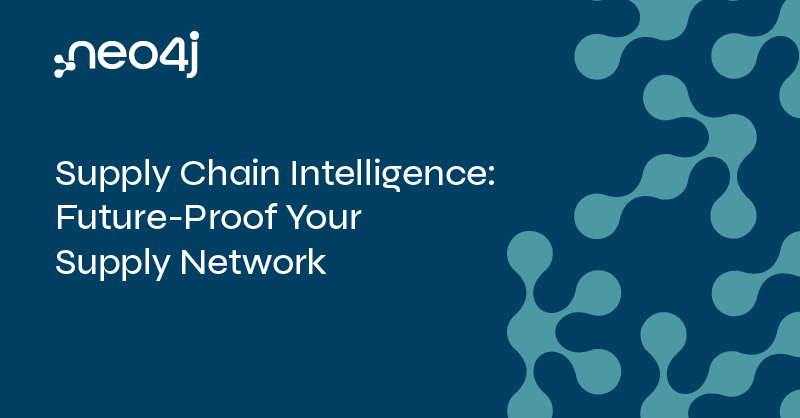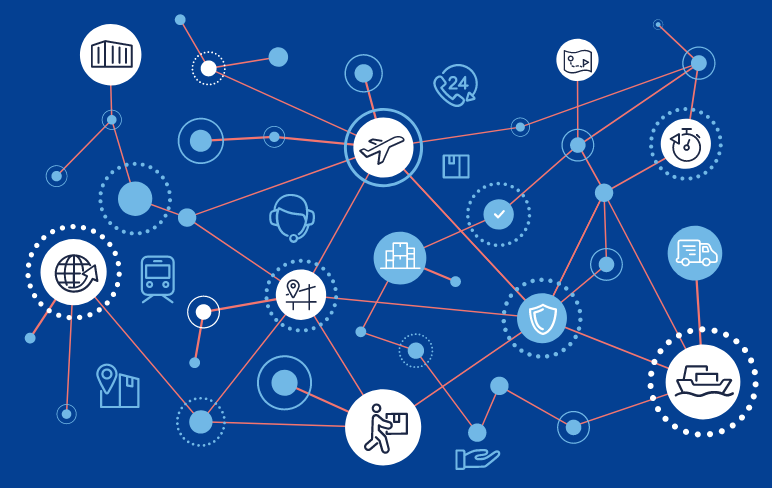Amazon Eating Your Lunch? What Data-Driven Retailers Can Do About It [Community Post]

Senior Data Scientist, ICC
5 min read

[As community content, this post reflects the views and opinions of the particular author and does not necessarily reflect the official stance of Neo4j.]
Nearly every analyst of the retail industry would consider Amazon as the source of the declining revenues of other retailers.
Yet that over-generalized sentiment doesn’t get to the bottom of the situation. The truth is that Amazon’s success lies in the fact that technology, innovation and data-driven decision making is woven into the very fabric of the organization. This means that Amazon’s decisions are executed with speed and precision.
While every retailer has stores and is able to access mounds of data, they need to rethink how they interact with their data, and more importantly, how they use it to inform their decisions.
Siloed Data = Slow Decision Making
Retailers with declining sales face a major problem that arises from organizational silos that have developed over time from historical workflows.
If we look at a clothing retailer for example, information typically flows from the design team to the product team, then to the buyers and planners, then to allocation for inventory management and finally to the customer service team to handle customer experience or product issues.
From this perspective, we can see how data silo formation becomes intertwined with the flow of data. Specifically, decisions from each team are arriving at different points in time, at different rates, with some data providing leading information and other lagging. Naturally, these develop into bottlenecks in the decision-making process, limiting organizational agility and the ability to adapt to the ever-changing, multi-channel marketplace.
Figure 1 – A Conventional View of Data Storage. Siloed and disconnected data cannot be used to generate critical insights for decision-making.
The Power of Informed Suggestions to Create a Frictionless Retail Environment
The rise of the multi-channel marketplace has created an environment where speed is of the essence. Customers want to be able to find, purchase and receive their products with minimal friction. They want to have the capacity to track their products, to know what’s in stock and to know where it’s stocked in real time.
This is putting the power of the data in the customer’s hands. On the other hand, the retailer needs to know what and where products are selling at a velocity that warrants the inventory to supply sales at the same rate.
Not All Database Technologies Are up for the Challenge
While many acknowledge the power of real-time analytics, implementation is a continuing challenge mainly due to technological limitations rather than analytics being cost-prohibitive. Having to integrate and consolidate data from different sources and platforms with varying levels of data management and data quality becomes a constraint.
Conventional databases (of the SQL and NoSQL variety) are simply not designed to handle connected data for different reasons. The work of connecting disconnected data is expensive in terms of human effort, storage and processing, especially when many-to-many relationships exist in the data.
Figure 2 – The Cost of Connecting Disconnected Data. A lot of time and processing power is required to take large data stores and connect the pieces together across different databases.
Harnessing the Power of Connected Data for Real-Time Analytics
There are two options for creating real-time views across the data silos:
- Stitch together and continuously synchronize your legacy resources with enormous infrastructure and related costs
- Use a complementary solution such as graph database technology
Creating a graph data model allows the breaking of historically hierarchical data flows, transforming them into interconnected nodes where data-based decision making can be executed, incorporating a broader dataset that is in sync with the view of other organizational units.
What this creates is a view of data as entities with relationships, rather than numbered rows in a column. There are three major areas where Neo4j graph technology can provide retailers with competitive advantage:
- Product Traceability: Traceability allows for quick identification where a product was manufactured, component parts were sourced, or where in the supply chain a specific group of products may be located. The impact of a defective component can be mitigated with a surgical – rather than widespread – product recall.
- Data-Driven Decision Making: Neo4j allows any retailer to quickly query all the dimensions of their business as events occur and evolve. Neo4j allows connected data across the enterprise to be stored in one easily queried location. With all the data in an analytics-ready form, retailers can now respond to issues with inventory, logistics, disruptors or natural events armed with the data to drive their decisions.
- Real-Time Product Recommender Systems: Provide customers with knowledge of what products are trending as they search. Use a combination of trends, business rules, customer purchase patterns and profiles, as well as product attributes to provide recommendations that allow store associates, contact center representatives or even a website to provide to direct-to-customer recommendations. Instead of waiting for the next sales report to push a real-time update to the ecommerce site, customers now know that they have up-to-date information on what products they should considering.
Figure 3 – An Example Real-Time Analytics Metagraph. This is an example data model that allows end-to-end tracking of products from manufacturer to the customer, from part to purchase.
Without data silos, an organization no longer needs to find and connect multiple databases and tables, then pipe the data into an analytical platform to then finally extract relevant information. A data silo-free environment eliminates bottlenecks and improves visibility across all relevant data, exposing the connectedness of the data.
The power of real-time analytics is the capacity to be able to gain immediate insight by leveraging this connected data to drive customer experience and loyalty. Neo4j is the engine that makes this most efficiently possible, delivering insights that bring you close to every aspect of the organization and, most importantly, the customer.
Why ICC?
ICC is an end-to-end technology and business consulting organization that helps clients solve complex problems. ICC has deep retail expertise with consultants who have worked for Fortune 500 companies. Our expertise in data movement and integration with ICC’s Human-Centered Design approach ensures we meet real end-user needs with delightful and easy-to-use analytics solutions.










